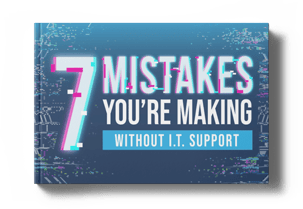Add Layers of Security To Ensure Your Business is Compliant
Add Layers of Security to Your Business to Ensure Your Business is Compliant “Are you sure my business is compliant?”
2 min read
Lance Stone : Oct 28, 2020 9:16:34 PM
“Are you sure my business is secure?”
It’s not surprising that this is one of the most common questions for technology professionals today. When you can’t turn on the news or read articles on your favorite platforms without hearing about a cybersecurity breach, you know it’s a big problem for businesses! Companies are losing hundreds of thousands of dollars due to ransomware or poor security measures.
Even so, there is a shroud of confusion around many cybersecurity topics such as PCI compliance. These security requirements, technically called Payment Card Industry Data Security Standards (PCI DSS), are created and maintained by the PCI Security Standards Council. While they specifically address credit card processing, the standards are also a solid litmus test for the state of your company’s cybersecurity.
In order to be considered PCI compliant, your company must follow the strictest standards for security and data privacy. PCI DSS includes 12 key requirements, 78 base requirements and over 400 test procedures. Plus, your company must be following these six major objectives:
Each layer of security is meant to help create a comprehensive security net around your company’s data and protect customers and your brand from unauthorized incursions. While the high-level descriptions of each step are straightforward, there are many small details that makeup PCI compliance that can easily trip up your technical team.
Constantly monitoring threats within your organization is a task that can be time-consuming and difficult unless you have the right tools in place. With a proactive approach to cybersecurity, you can reduce the risk of an attack or loss of data from poor internal procedures. PCI compliance is meant to address prevention, detection, and an appropriate reaction to security incidents. Some basic PCI compliance standards are also considered best-practices for traditional cybersecurity:
While there are no guarantees in the world of cybersecurity, following the PCI DSS requirements can help reduce the possibility of an attack.
Want to learn more about PCI compliance and whether your company should pursue these rigorous standards? Contact the professionals at On Time Tech at 415-294-5250 or request a complimentary consultation online anytime. We specialize in cybersecurity, helping companies of all sizes maintain a secure and compliant environment.

Add Layers of Security to Your Business to Ensure Your Business is Compliant “Are you sure my business is compliant?”
Microsoft Excel: Getting Started With Pivot Tables Pivot tables are a great way to organize and analyze data with ease. Using this Microsoft Excel...
Microsoft Outlook Send Later Feature Using the tools at your disposal effectively is the sign of a good craftsperson. With some exceptions, many of...

On Time Tech is an IT Support and Computer Services company serving California. We provide services to the areas in and around We know businesses like yours need technology support in order to run highly-effective organizations. Leverage pro-growth technology services for your company now.
San Francisco:
182 Howard St.
Suite 108
San Francisco, CA 94105
Los Angeles:
8350 Rex Road
Pico Rivera, CA 90660
Business Hours:
M-F: 8AM-9PM
© 2024 On Time Tech